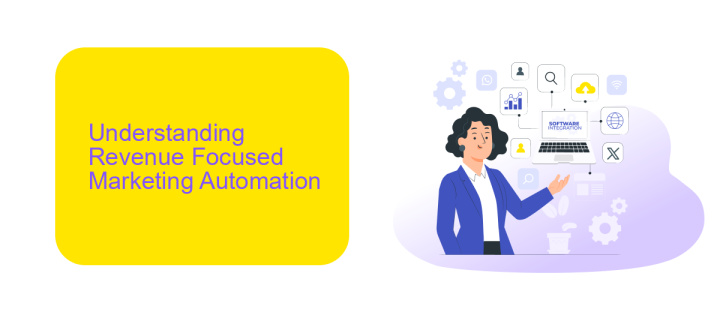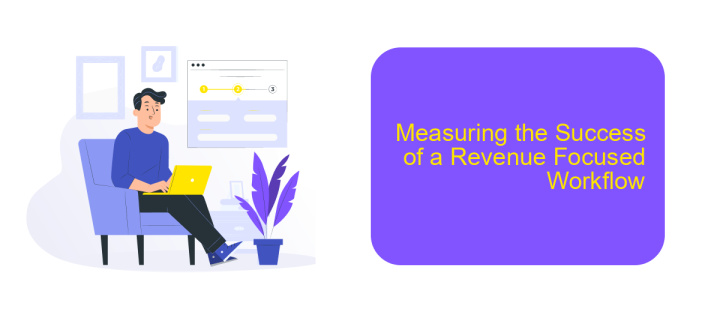Revenue Focused Marketing Automation Workflow
In today's competitive business landscape, leveraging marketing automation to drive revenue growth is more crucial than ever. A well-designed marketing automation workflow not only streamlines processes but also enhances customer engagement and boosts sales. This article delves into the key components and strategies for creating a revenue-focused marketing automation workflow that delivers measurable results.
Introduction
In today's competitive business landscape, revenue-focused marketing automation workflows are essential for driving growth and optimizing customer engagement. By leveraging advanced technologies and data-driven strategies, businesses can streamline their marketing efforts, ensuring they target the right audience at the right time with the right message.
- Automated lead nurturing to convert prospects into customers
- Personalized email campaigns to enhance customer experience
- Real-time analytics to measure campaign effectiveness
- Integration with CRM systems for seamless data management
One critical aspect of creating an effective marketing automation workflow is integrating various tools and platforms. Services like ApiX-Drive simplify this process by enabling seamless connections between different applications, ensuring data flows smoothly across your marketing stack. By automating these integrations, businesses can save time, reduce errors, and focus on strategic initiatives that drive revenue. As a result, companies can achieve a higher return on investment and foster long-term customer loyalty.
Understanding Revenue Focused Marketing Automation

Revenue focused marketing automation is a strategy designed to optimize marketing activities with the primary goal of increasing revenue. Unlike traditional marketing automation, which often focuses on lead generation and nurturing, revenue focused automation emphasizes the entire customer lifecycle, from acquisition to retention. This approach leverages data analytics to identify high-value customers and tailor personalized marketing campaigns that drive conversions and maximize customer lifetime value.
Implementing a revenue focused marketing automation workflow involves integrating various tools and platforms to streamline processes and enhance efficiency. Services like ApiX-Drive can be instrumental in this regard, providing seamless integration between different marketing and sales applications. By automating data transfer and synchronization, ApiX-Drive ensures that marketing efforts are aligned with sales objectives, enabling businesses to make data-driven decisions and achieve better ROI. This holistic approach not only improves operational efficiency but also ensures that every marketing dollar spent contributes directly to revenue growth.
Building an Effective Revenue Focused Workflow

Creating an effective revenue-focused marketing automation workflow requires a strategic approach and the right tools. Start by identifying your key revenue drivers and target audience. Understand their behaviors, preferences, and pain points to tailor your messaging and offers accordingly.
- Define clear objectives and key performance indicators (KPIs) to measure success.
- Segment your audience based on demographics, behavior, and engagement levels.
- Develop personalized content and offers for each segment to enhance engagement.
- Automate repetitive tasks such as email campaigns, social media posts, and follow-ups.
- Integrate your marketing tools and platforms using services like ApiX-Drive to ensure seamless data flow and synchronization.
- Continuously monitor and analyze performance metrics to optimize and refine your workflow.
By following these steps and leveraging automation tools, you can create a streamlined and effective revenue-focused marketing workflow. Regularly reviewing and adjusting your strategy based on data-driven insights will help you stay ahead of the competition and drive sustainable growth.
Measuring the Success of a Revenue Focused Workflow

Measuring the success of a revenue-focused marketing automation workflow requires a strategic approach to data collection and analysis. First, it's essential to establish key performance indicators (KPIs) that align with your revenue goals. These KPIs could include metrics such as conversion rates, customer acquisition costs, and average order value.
Once KPIs are set, leverage analytics tools to track performance in real-time. Integrating your marketing automation platform with a service like ApiX-Drive can streamline this process by automating data flows between different systems, ensuring you have accurate and up-to-date information.
- Monitor conversion rates to understand how effectively your workflow turns leads into customers.
- Analyze customer acquisition costs to ensure your marketing spend is cost-effective.
- Track average order value to gauge the profitability of your marketing efforts.
Regularly reviewing these metrics will provide insights into the effectiveness of your workflow and highlight areas for improvement. By continuously optimizing based on data, you can ensure your marketing automation efforts are driving maximum revenue growth.
Conclusion
Implementing a revenue-focused marketing automation workflow can significantly enhance your business's ability to generate and capture leads, streamline processes, and ultimately boost revenue. By leveraging data-driven insights and automating repetitive tasks, companies can focus more on strategic initiatives that drive growth. This approach not only improves efficiency but also ensures a more personalized customer experience, leading to higher conversion rates and customer retention.
Moreover, integrating various marketing tools and platforms is crucial for a seamless workflow. Services like ApiX-Drive facilitate this integration by connecting different applications and automating data transfers, making it easier to manage and optimize your marketing efforts. By utilizing such tools, businesses can ensure that all components of their marketing strategy are aligned and working towards the same revenue goals. In conclusion, a well-implemented marketing automation workflow, supported by robust integration solutions, is essential for maximizing revenue and achieving long-term business success.


FAQ
What is Revenue Focused Marketing Automation?
How can I implement a Revenue Focused Marketing Automation Workflow?
What are the key components of a Revenue Focused Marketing Automation Workflow?
How do I measure the success of a Revenue Focused Marketing Automation Workflow?
Can I integrate my existing tools with a Revenue Focused Marketing Automation platform?
Apix-Drive will help optimize business processes, save you from a lot of routine tasks and unnecessary costs for automation, attracting additional specialists. Try setting up a free test connection with ApiX-Drive and see for yourself. Now you have to think about where to invest the freed time and money!

